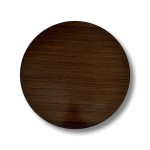Essential Aspects of Above Ground Vegetable Gardening
Embark on a rewarding journey of homegrown vegetables with above ground gardening. Whether you're a seasoned gardener or a novice, this comprehensive guide will provide you with the knowledge and tools to cultivate a thriving edible paradise.
Advantages of Above Ground Gardens
- Accessibility: Raised beds are easily accessible for gardeners of all abilities, including those with physical limitations.
- Improved Drainage: Elevated beds allow excess water to drain quickly, preventing root rot and waterlogging.
- Extended Growing Season: By controlling the soil temperature, above ground gardens can extend the growing season in cooler climates.
- Reduced Weed Pressure: The height of the beds deters weeds from invading the garden.
- Soil Customization: You have complete control over the soil composition, allowing you to tailor it to specific crop requirements.
Choosing the Right Materials
The materials you use for your above ground garden will determine its durability, functionality, and aesthetic appeal. Common options include:
Wood: Cedar or redwood are preferred for their natural resistance to rot and insects. Concrete Blocks: Durable, fireproof, and low-maintenance, but can be heavy and difficult to move. Plastic or Metal: Lightweight and easy to install, but may not be as aesthetically pleasing as natural materials.Construction Considerations
When constructing your above ground garden, keep the following factors in mind:
Height: 8-12 inches is an ideal height for most crops, providing adequate root space and easy access. Width: 3-4 feet is a good width for reaching all areas of the bed without needing to step on the soil. Length: Determine the length based on the available space and the number of plants you wish to grow. Location: Choose a sunny location with good air circulation to promote healthy plant growth.Soil Preparation and Maintenance
The foundation of a thriving garden is nutrient-rich soil. For above ground gardens, use a mixture of:
Topsoil: Provides essential nutrients and organic matter. Compost or Manure: Adds fertility and improves soil structure. Perlite or Vermiculite: Improves drainage and aeration.Regularly water and fertilize your vegetables according to their specific needs. Mulch with organic materials to retain moisture, suppress weeds, and regulate soil temperature.
Crop Selection
Choose a variety of vegetables that thrive in above ground gardens. Ideal options include:
Leafy Greens: Spinach, lettuce, kale Root Vegetables: Carrots, radishes, beets Tomatoes: Indeterminate varieties are suitable for raised beds. Peppers: Sweet and hot peppers both grow well in containers. Herbs: Basil, oregano, thymeTroubleshooting Common Problems
Above ground gardens can occasionally encounter challenges. Here are some common ones:
Poor Drainage: Ensure that the beds have adequate drainage holes and that the soil is amended with drainage materials. Nutrient Deficiencies: Supplement the soil with fertilizers or compost to address yellowing leaves and stunted growth. Pests and Diseases: Regularly inspect plants for signs of pests or diseases and treat accordingly with organic or chemical controls.
Raised Bed Garden From A Z What To Know Joe Gardener

Why I Stopped Using Raised Garden Beds The Seasonal Homestead

The Best Vegetables To Grow In Raised Beds 10 Easy Choices

Free Visual Tutorial To Build An Above Ground Vegetable Tub Garden

Raised Bed Garden From A Z What To Know Joe Gardener

18 Raised Garden Bed Ideas At All Points

7 Common Mistakes In Raised Bed Gardening The Beginner S Garden

Guide To Raised Beds Plans Timing Tending Gardener S Supply

How To Make A New Raised Bed Garden Step By

The Benefits Of Raised Garden Beds Finegardening








